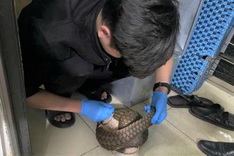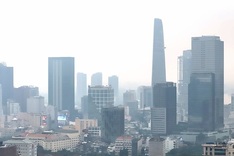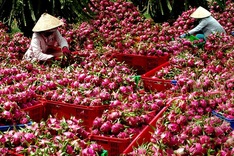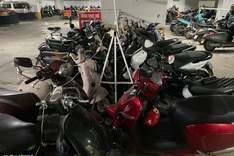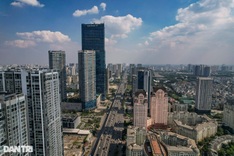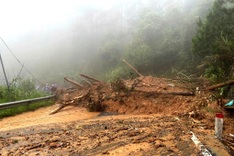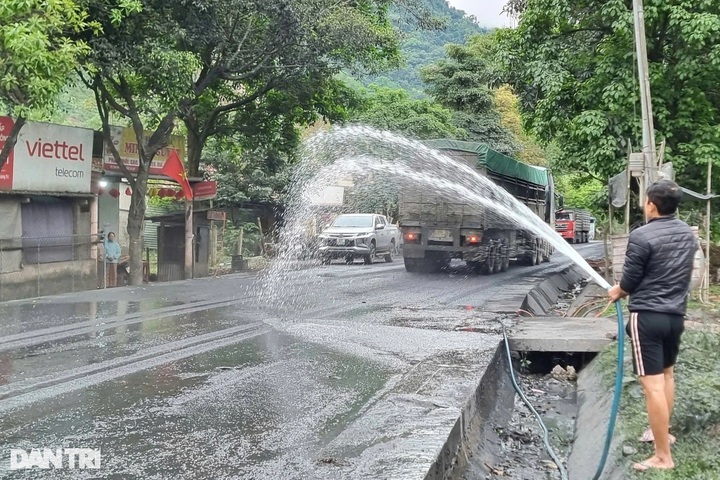
Residents living along National Highway 15D in Dakrong District in the central province of Quang Tri have endured severe environmental pollution caused by the transportation of coal from Laos into Vietnam.
Ho Van Phim’s house, located in A Ngo Commune, sits just beside the highway. Directly across from his home is a coal storage and transshipment site operated by a private company.
Despite keeping his doors and windows shut throughout the day, coal dust still finds its way into every corner of the house.
Phim and his neighbours have long been forced to live with thick layers of coal dust covering their yards, walls, and pathways. Even the highway and nearby drainage ditches are coated in black residue.
“I have to clean the house three to four times a day, and not long after, it’s all covered in dust again. It’s unbearable living in such a polluted environment. We have small children and are constantly worried about the health risks from inhaling coal dust,” Phim said.
Beyond the dust from the storage site, the lives of many families in A Ngo Commune are also disrupted by the constant flow of coal trucks along the highway. Each day, hundreds of heavy vehicles transport coal from Laos through the area, sending clouds of dust into homes and schools with every pass.
At A Rong Tren, a satellite campus of A Ngo Commune Kindergarten, teacher Ho Thi Lai has to wipe down and wash the children’s toys two to three times a day due to the pervasive coal dust. The classroom must remain closed at all times to protect the 22 students from the health hazards of the polluted air.
“Every morning, we start the day by sweeping away coal dust from the classroom and the yard, then scrubbing the toys. We have to spray water and wipe multiple times just to keep things clean for a short while, but the dust comes back so quickly. We are deeply concerned about the children’s health in such conditions,” Lai shared.
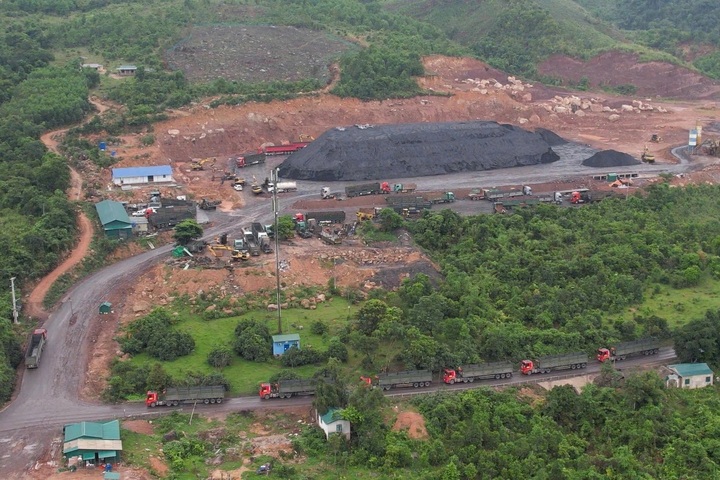
Three private companies are currently involved in transporting, storing, and transferring coal from Laos to Vietnam through the La Lay International Border Gate in Dakrong. One of the companies operates a major coal yard in A Deng Village, with a constant stream of trucks entering and exiting daily.
Ho Tat Huan, chairman of A Ngo Commune People’s Committee, acknowledged the environmental degradation caused by coal transport vehicles. “In dry weather it’s dust, and when it rains, it’s mud. It severely affects people’s lives here,” he said.
According to Huan, in addition to airborne dust, residents frequently complain about traffic safety risks around the coal yard.
“We’ve repeatedly reported the situation to higher authorities, but the problem has not been thoroughly resolved. We hope the relevant agencies will soon implement effective measures to reduce pollution and ensure road safety along Highway 15D so that local people can live more comfortably,” Huan added.
The district’s Agriculture and Environment Department admitted that addressing the pollution caused by coal transport is not a problem that can be solved overnight. Stricter monitoring is required for all activities related to coal handling and transport.
An official from the department also noted that oversight of transport vehicles falls under the authority of the transport sector, while the agriculture and environment agencies are only responsible for coordination. “If these vehicles fail to meet environmental standards, border clearance should be suspended,” the official said.
Investigations show that the environmental and traffic safety issues along Highway 15D extend beyond A Ngo Commune, affecting neighboring communes such as Huc Nghi and Ta Long in Dakrong District.
Despite repeated petitions from both local residents and government officials in recent years, no comprehensive solution has yet been implemented to end the ongoing pollution crisis.



